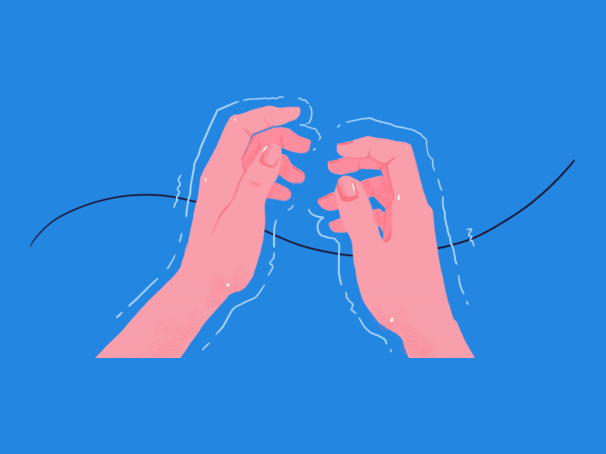
Anxiety responds very well to treatment. Yet it is often hard for people to eliminate anxiety on their own. That is because anxiety is often self-sustaining - where the symptoms of anxiety lead to further anxiety. There are many anxiety symptoms that cause a considerable amount of fear and may trigger severe attacks. These include:
- Chest Pains
- Lightheadedness
- Weakness and Tingling
- Feeling Faint
- Rapid Heartbeat
These symptoms can be quite scary - so scary, in fact, that some people are hospitalized as they worry they're having a heart attack. But what is fascinating is that many of these symptoms can, in some cases, be traced back to one specific anxiety symptom: shallow breathing.
Shallow Breathing Affects Many With Anxiety
Shallow breathing is defined as small, short breaths. When caused by anxiety, they are unlikely to be dangerous and rarely indicate an underlying health problem (although obesity may increase the risk of shallow breathing). However, this little anxiety symptom can cause a cascade of reactions that have wreaks havoc on millions of people with anxiety.
It's most commonly associated with panic attacks, but it may be present in other types of anxiety disorder.
The Problem Isn't Too Little Air - It's Too Much
When people talk about shallow breathing, their primary concern is whether they're getting enough oxygen. Short, rapid breaths make people feel as though they need to get deeper breaths, and so they try to yawn or breathe in deeply in order to compensate.
Unfortunately, this makes everything worse.
But it's best to start at the beginning. The reason anxiety causes shallow breathing is because anxiety is the activation of your fight or flight system. It's an evolutionary adaptation designed to keep you safe from harm. When faced with danger, your heartbeat speeds up and you breathe faster in order to get more oxygen for fighting or fleeing.
Those with anxiety aren't facing any fears, but their body reacts as though they are. That's what creates an anxiety disorder. The body is constantly releasing adrenaline and reacting as though the person is in a fearful situation, even though they are not.
The Complications of Shallow Breathing
As your fight or flight system activates and your breathing speeds up, you start shallow breathing throughout the day. This means that those with anxiety are shallow breathing for minutes to hours on end, and this creates another problem: hyperventilation.
Shallow breathing doesn't mean you need more oxygen. It actually means that you're over-breathing - you're breathing out carbon dioxide too quickly before your body has a chance to make more. Oxygen fills your lungs right when you breathe, but carbon dioxide takes time to develop, and when you shallow breathe, each expulsion of breath takes out more Co2 than your body has created.
If you do this for too long, you hyperventilate. The problem is that hyperventilation makes your body feel like you're not getting enough oxygen. Essentially, it makes you feel like you need to take deeper breaths and take in as much air as possible. This makes all of the symptoms of hyperventilation worse.
It should then come as no surprise that hyperventilation is what causes a host of other anxiety side effects, including:
- Chest Pains
- Lightheadedness
- Weakness and Tingling
- Feeling Feint
- Rapid Heartbeat
It can even cause dizziness, trouble concentrating/thinking, and many other aches, pains, and strange sensations all over your body. In a way, shallow breathing causes almost all of the most troubling symptoms of anxiety.
Rapid Breathing During a Panic Attack
Panic attacks are often triggered by this hyperventilation and during a panic attack - when your anxiety is at an all-time high - you're often breathing even more rapidly. This worsens the anxiety symptoms and causes the body to feel as though something terrible is going wrong.
How to Stop Shallow Breathing
For all of these reasons, shallow breathing is one of the most important things to control when you have anxiety. Often this is easier said than done. Consider the following important tips for understanding shallow breathing and your anxiety:
- Mindfulness Your first step is to learn more about both shallow breathing and hyperventilation in order to gain more self-awareness towards how you're reacting to your anxiety. That's what mindfulness is. Try to notice when you're shallow breathing, notice when hyperventilation is coming on, and notice what you're doing to contribute to it. Once you understand those points more, it will become easier to control.
- Slow Breathing You'll also want to slow down your breathing and fight the urge to take deeper breaths. Too much oxygen will make the symptoms worse. Try taking very slow, very deliberate breaths. Take at least 5 seconds to breathe in. Hold for 2 seconds. Then breathe out for 6 to 7 seconds. This will help you regain some of your carbon dioxide while still allowing you to breathe comfortably.
- Breathing Retraining Your body may eventually forget how to breathe in a healthy way. That's why you should also consider enrolling in a yoga or meditation class. Many people believe that both yoga and meditation are very useful for controlling anxiety. But beyond that, both involve breathing retraining. You'll need to remind your body how to breathe in a healthier way, so that you don't continue to shallow breathe even when you don't have anxiety.
Shallow breathing may also cause you to think about your breathing more than you did in the past. Unfortunately, those that think about their breathing have a tendency to think their body needs more air than it does, and that also increases the risk of hyperventilation.
That's why so much of your ability to control shallow breathing is going to come from whether or not you can stop your anxiety. You can't always control how you feel during an anxiety attack, but you can control whether you get these attacks in the first place by learning to stop your anxiety in its tracks.












